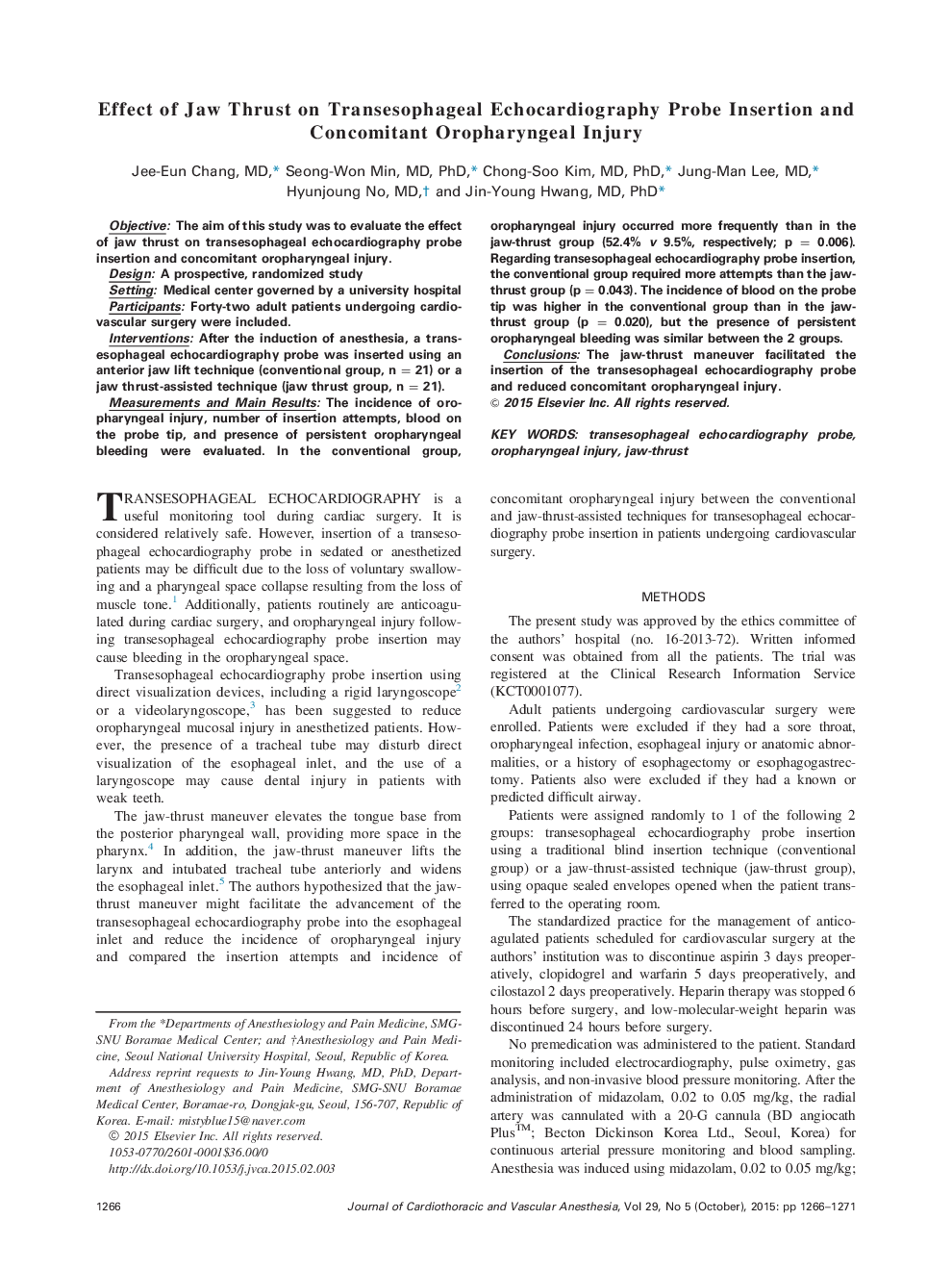| Article ID | Journal | Published Year | Pages | File Type |
|---|---|---|---|---|
| 2759359 | Journal of Cardiothoracic and Vascular Anesthesia | 2015 | 6 Pages |
ObjectiveThe aim of this study was to evaluate the effect of jaw thrust on transesophageal echocardiography probe insertion and concomitant oropharyngeal injury.DesignA prospective, randomized studySettingMedical center governed by a university hospitalParticipantsForty-two adult patients undergoing cardiovascular surgery were included.InterventionsAfter the induction of anesthesia, a transesophageal echocardiography probe was inserted using an anterior jaw lift technique (conventional group, n = 21) or a jaw thrust-assisted technique (jaw thrust group, n = 21).Measurements and Main ResultsThe incidence of oropharyngeal injury, number of insertion attempts, blood on the probe tip, and presence of persistent oropharyngeal bleeding were evaluated. In the conventional group, oropharyngeal injury occurred more frequently than in the jaw-thrust group (52.4% v 9.5%, respectively; p = 0.006). Regarding transesophageal echocardiography probe insertion, the conventional group required more attempts than the jaw-thrust group (p = 0.043). The incidence of blood on the probe tip was higher in the conventional group than in the jaw-thrust group (p = 0.020), but the presence of persistent oropharyngeal bleeding was similar between the 2 groups.ConclusionsThe jaw-thrust maneuver facilitated the insertion of the transesophageal echocardiography probe and reduced concomitant oropharyngeal injury.
